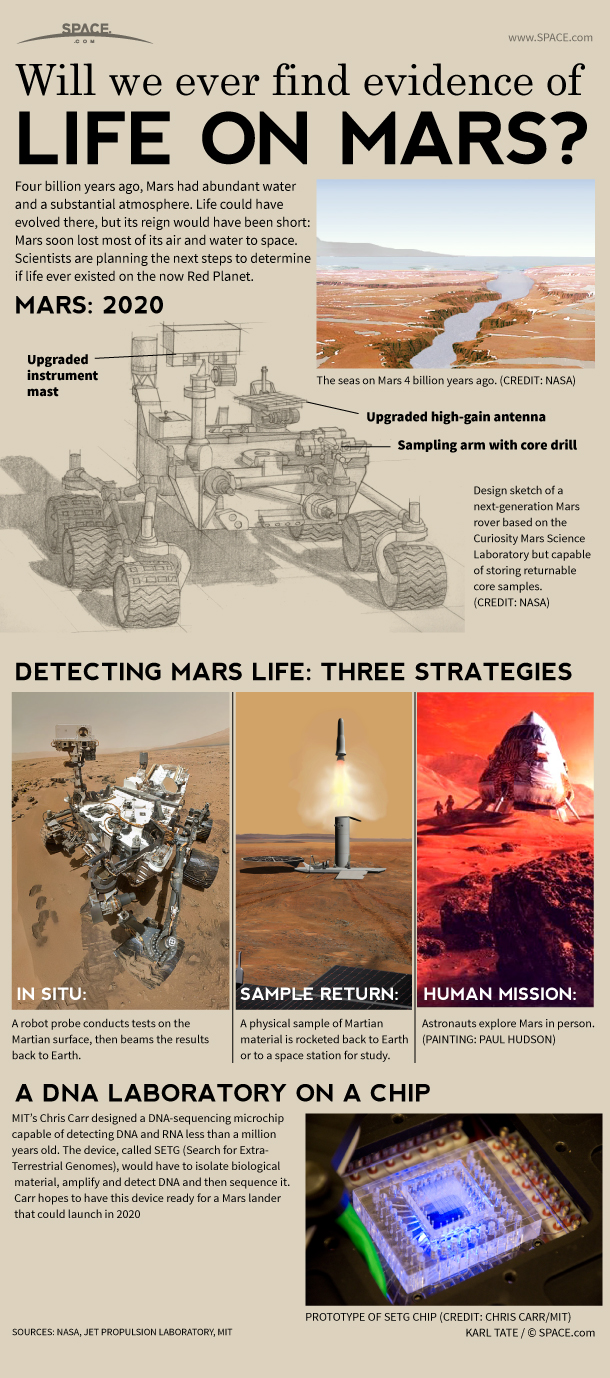How NASA Could Look For Ancient Life on Mars (Infographic)

Four billion years ago, Mars had abundant water and a substantial atmosphere. Life could have evolved there, but its reign would have been short: Mars soon lost most of its air and water to space. Scientists are planning the next steps to determine if life ever existed on the now Red Planet.
The next-generation of Mars rovers would be based on the Curiosity rover — the centerpiece of NASA's Mars Science Laboratory mission — but would have upgraded instruments and be capable of storing returnable core samples of Mars soil.
Full Story: Incredible Technology: How to Find Life on Mars
To detect life on Mars, NASA could pursue three strategies. A robot probe could conduct tests on the Martian surface, then beam the results back to Earth ("in situ" investigation). Second, a sample-return mission could launch a bit of Mars soil back to Earth on a return rocket for study. The third option would be for humans to go to Mars in person.
Poll: Do You Believe Life Exists on Mars Now?
MIT’s Chris Carr designed a DNA-sequencing microchip capable of detecting DNA and RNA less than a million years old. The device, called SETG (Search for Extra-Terrestrial Genomes), would have to isolate biological material, amplify and detect DNA and then sequence it. Carr hopes to have this device ready for a Mars lander that could launch in 2020.
- The Search for Life on Mars (A Photo Timeline)
- Life: Did Mars Make It - And Then Lose It?
- Top 5 Attempts to Find Life on Mars
Follow us @Spacedotcom, Facebook and Google+.
Breaking space news, the latest updates on rocket launches, skywatching events and more!

Karl's association with Space.com goes back to 2000, when he was hired to produce interactive Flash graphics. From 2010 to 2016, Karl worked as an infographics specialist across all editorial properties of Purch (formerly known as TechMediaNetwork). Before joining Space.com, Karl spent 11 years at the New York headquarters of The Associated Press, creating news graphics for use around the world in newspapers and on the web. He has a degree in graphic design from Louisiana State University and now works as a freelance graphic designer in New York City.
